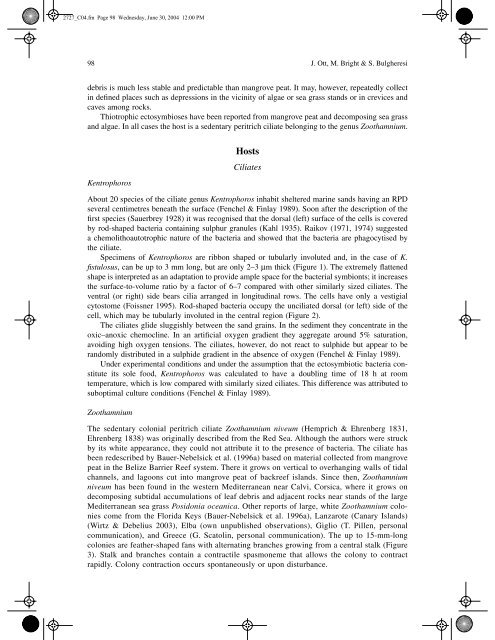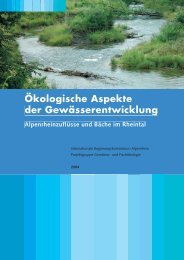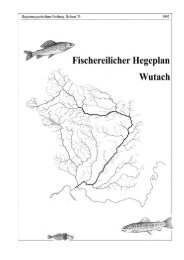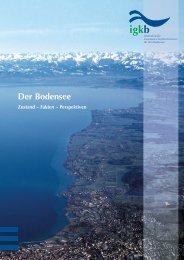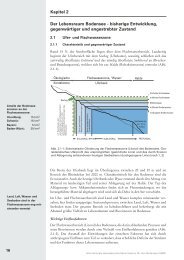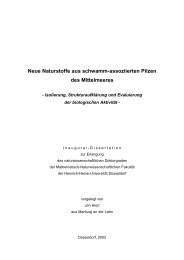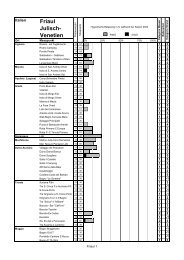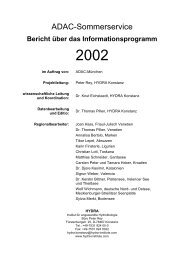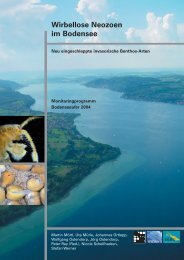marine microbial thiotrophic ectosymbioses - HYDRA-Institute
marine microbial thiotrophic ectosymbioses - HYDRA-Institute
marine microbial thiotrophic ectosymbioses - HYDRA-Institute
Create successful ePaper yourself
Turn your PDF publications into a flip-book with our unique Google optimized e-Paper software.
2727_C04.fm Page 98 Wednesday, June 30, 2004 12:00 PM<br />
98 J. Ott, M. Bright & S. Bulgheresi<br />
debris is much less stable and predictable than mangrove peat. It may, however, repeatedly collect<br />
in defined places such as depressions in the vicinity of algae or sea grass stands or in crevices and<br />
caves among rocks.<br />
Thiotrophic <strong>ectosymbioses</strong> have been reported from mangrove peat and decomposing sea grass<br />
and algae. In all cases the host is a sedentary peritrich ciliate belonging to the genus Zoothamnium.<br />
Kentrophoros<br />
Hosts<br />
Ciliates<br />
About 20 species of the ciliate genus Kentrophoros inhabit sheltered <strong>marine</strong> sands having an RPD<br />
several centimetres beneath the surface (Fenchel & Finlay 1989). Soon after the description of the<br />
first species (Sauerbrey 1928) it was recognised that the dorsal (left) surface of the cells is covered<br />
by rod-shaped bacteria containing sulphur granules (Kahl 1935). Raikov (1971, 1974) suggested<br />
a chemolithoautotrophic nature of the bacteria and showed that the bacteria are phagocytised by<br />
the ciliate.<br />
Specimens of Kentrophoros are ribbon shaped or tubularly involuted and, in the case of K.<br />
fistulosus, can be up to 3 mm long, but are only 2–3 mm thick (Figure 1). The extremely flattened<br />
shape is interpreted as an adaptation to provide ample space for the bacterial symbionts; it increases<br />
the surface-to-volume ratio by a factor of 6–7 compared with other similarly sized ciliates. The<br />
ventral (or right) side bears cilia arranged in longitudinal rows. The cells have only a vestigial<br />
cytostome (Foissner 1995). Rod-shaped bacteria occupy the unciliated dorsal (or left) side of the<br />
cell, which may be tubularly involuted in the central region (Figure 2).<br />
The ciliates glide sluggishly between the sand grains. In the sediment they concentrate in the<br />
oxic–anoxic chemocline. In an artificial oxygen gradient they aggregate around 5% saturation,<br />
avoiding high oxygen tensions. The ciliates, however, do not react to sulphide but appear to be<br />
randomly distributed in a sulphide gradient in the absence of oxygen (Fenchel & Finlay 1989).<br />
Under experimental conditions and under the assumption that the ectosymbiotic bacteria constitute<br />
its sole food, Kentrophoros was calculated to have a doubling time of 18 h at room<br />
temperature, which is low compared with similarly sized ciliates. This difference was attributed to<br />
suboptimal culture conditions (Fenchel & Finlay 1989).<br />
Zoothamnium<br />
The sedentary colonial peritrich ciliate Zoothamnium niveum (Hemprich & Ehrenberg 1831,<br />
Ehrenberg 1838) was originally described from the Red Sea. Although the authors were struck<br />
by its white appearance, they could not attribute it to the presence of bacteria. The ciliate has<br />
been redescribed by Bauer-Nebelsick et al. (1996a) based on material collected from mangrove<br />
peat in the Belize Barrier Reef system. There it grows on vertical to overhanging walls of tidal<br />
channels, and lagoons cut into mangrove peat of backreef islands. Since then, Zoothamnium<br />
niveum has been found in the western Mediterranean near Calvi, Corsica, where it grows on<br />
decomposing subtidal accumulations of leaf debris and adjacent rocks near stands of the large<br />
Mediterranean sea grass Posidonia oceanica.<br />
Other reports of large, white Zoothamnium colonies<br />
come from the Florida Keys (Bauer-Nebelsick et al. 1996a), Lanzarote (Canary Islands)<br />
(Wirtz & Debelius 2003), Elba (own unpublished observations), Giglio (T. Pillen, personal<br />
communication), and Greece (G. Scatolin, personal communication). The up to 15-mm-long<br />
colonies are feather-shaped fans with alternating branches growing from a central stalk (Figure<br />
3). Stalk and branches contain a contractile spasmoneme that allows the colony to contract<br />
rapidly. Colony contraction occurs spontaneously or upon disturbance.


